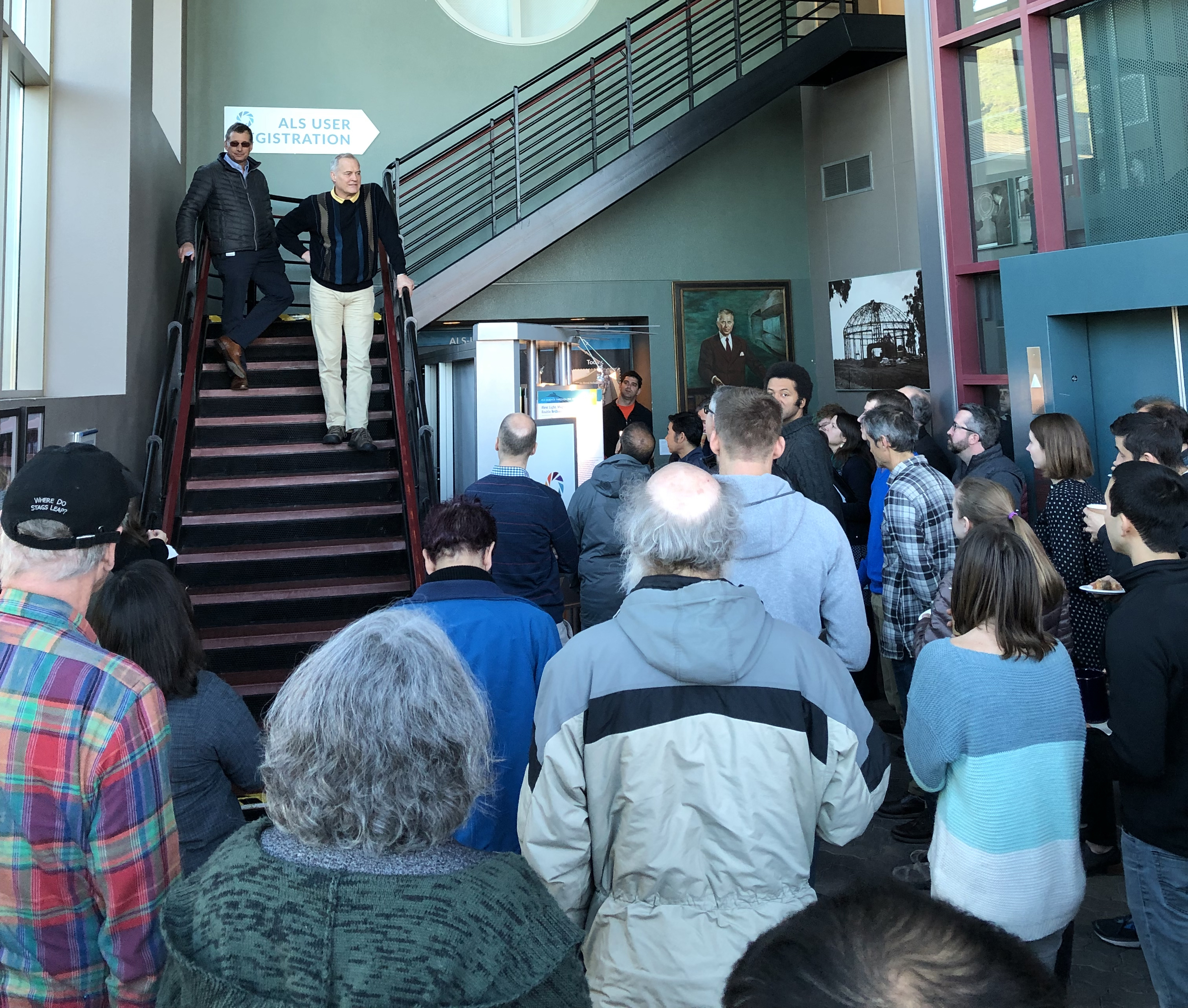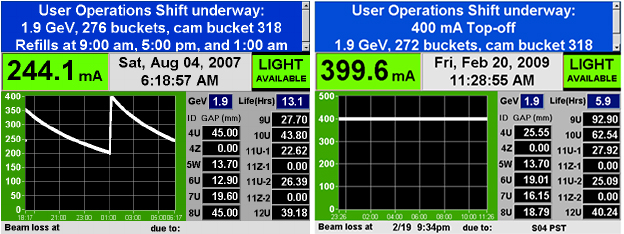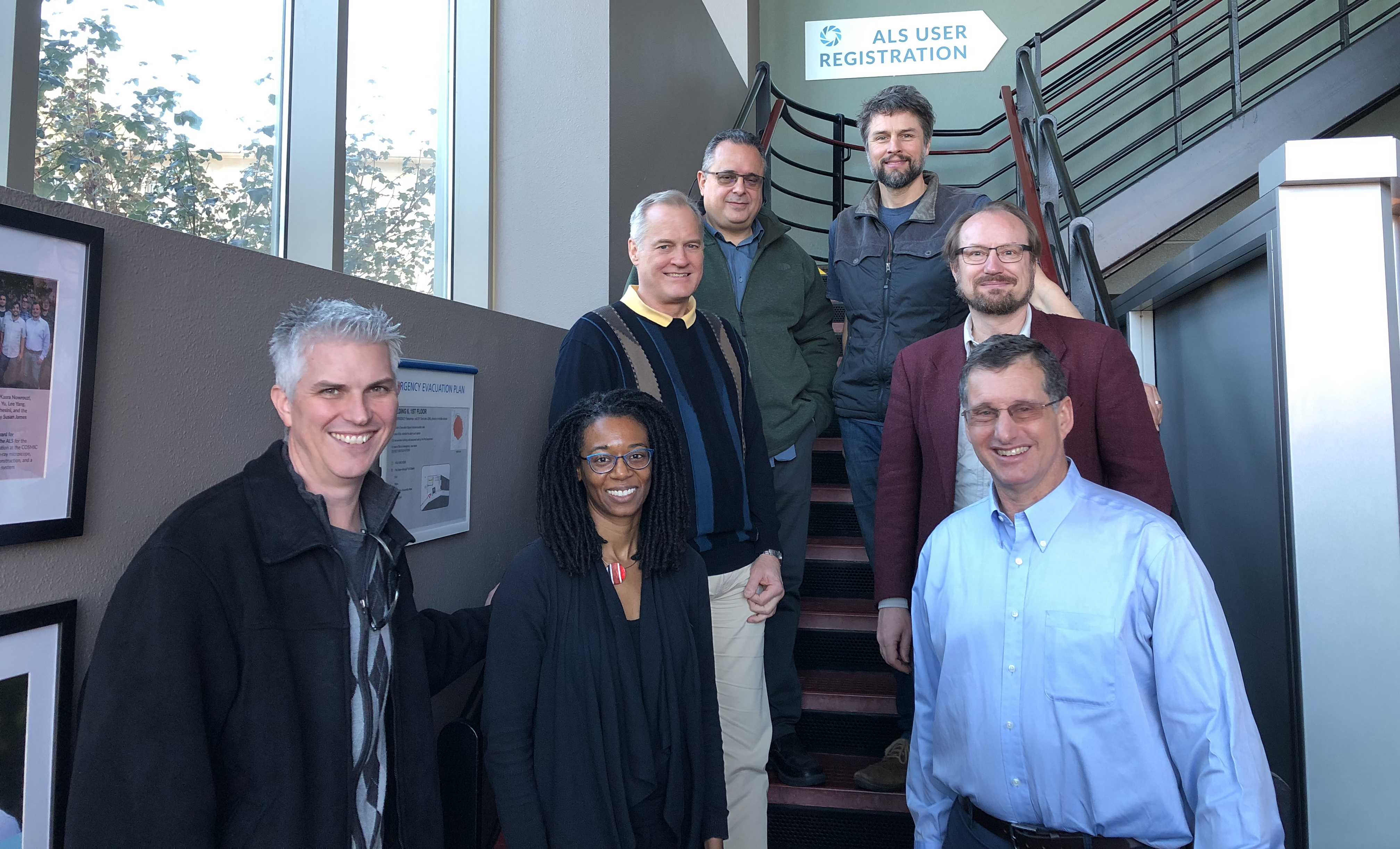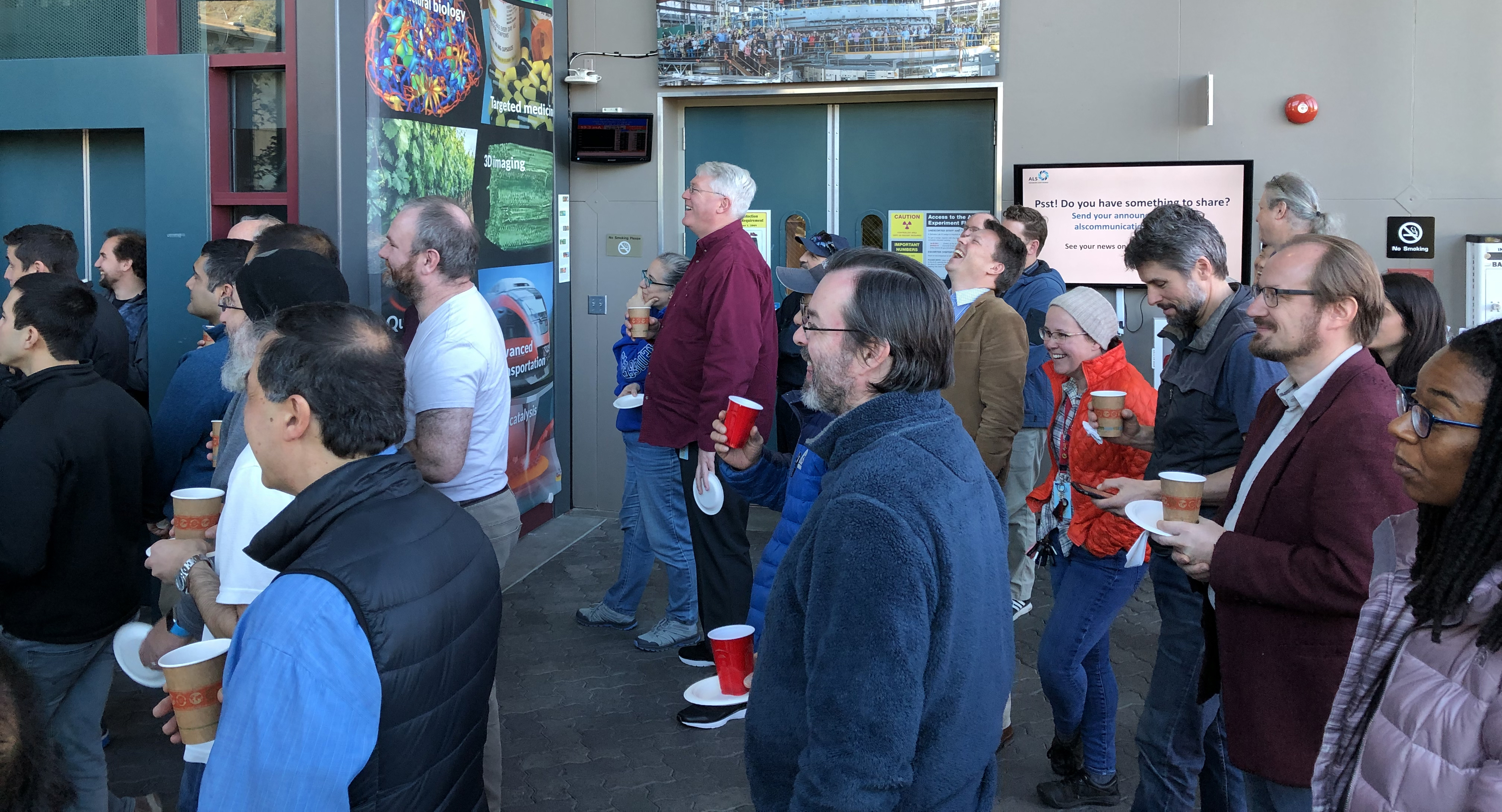
by Lori Tamura
In February, the ALS marked the 10th anniversary of one of the biggest upgrades in its history: the transition to “top-off mode,” which took place on February 11, 2009. To celebrate this milestone, the ALS community gathered for ring-shaped pastries (i.e., donuts) and coffee (topping off allowed). Brief remarks were given by ALS Director Steve Kevan and ALS-U Project Director Dave Robin, who was the ALS Accelerator Physics Group leader when top-off mode was implemented.
Before top-off, electrons in the storage ring were refilled three times a day. After each initial spike, the beam current would slowly decay over the next eight hours until the next fill. In top-off mode, the refills are quasi-continuous, keeping the current constant. This enhances the flux and brightness of the radiation while simultaneously improving the thermal stability of the machine and its beamlines.

“I was a user when it happened,” said Kevan. “I benefited from it—everybody did. It was an upgrade that increased our flux, our brightness, our stability, everything, so it was a great thing.” He added: “It involved a lot of divisions around the Lab, an example of team science at its best.”

In his remarks, Robin acknowledged the contributions of Christoph Steier, Mike Famie, Alexis Smith-Baumann, Ken Baptiste, Rick Donahue, and Hiroshi Nishimura. “There were about 30-plus people on the project,” he said. “I won’t be able to call everybody out, but I wanted to mention a few.” He also recalled that the project had two big components: one was to upgrade the injector, and the other was to ensure that injecting electrons into the ring with the shutters open was safe. There were many challenges, most memorably the time the booster-ring bend-magnet power supply failed dramatically, costing several weeks’ recovery time. “In the end, we got approval,” he said, “and in February we turned on, and it worked beautifully right from the start.”
“Users have come to expect that top-off will work, like their phones work,” commented Senior Scientist Eli Rotenberg. Long-time control-room operator Dave Richardson had some supporting data. He noted that the ALS’s reliability metric (percentage of scheduled beam delivered) since the start of top-off mode is 96.2%. “I think it’s very safe to say that the top-off mode upgrade has been a magnificent success!” he said.
Staff Scientist David Shapiro commented, “Top-off gives you twice the brightness, so that means you can do measurements faster. That doesn’t mean much if your measurements take 1 second, but it can mean a lot if your measurements take 12 hours. You can definitely do more complex experiments with top-off.”
Robin also observed that projects like these build on each other. One month after the successful implementation of top-off, the ALS was asked to apply for stimulus funds and had the brightness upgrade project ready to go. “I think the success of the project for top-off led us to funding for the sextupole project. So each project’s success helps to build momentum for the next… and we’re going to get to do it all over again with ALS-U!”
